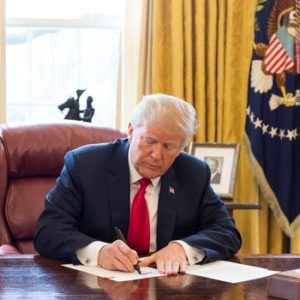On October 3, President Trump issued an executive order on “protecting and improving Medicare for our nation’s seniors.” For now, it’s only a statement of intent, but there’s quite a bit to like among the stated intentions.
I’ve long argued that both Republicans and Democrats focus too heavily on the demand side of health care — specifically federal health insurance law. Both sides largely ignore the supply side — how we actually deliver care. For this reason, I’ve criticized some previous initiatives by the Trump administration and its Republican allies in Congress, such as proposals to repeal and replace the Affordable Care Act (Obamacare).
The primary concern of the president’s executive order is a federal health insurance program — Medicare. However, the order strikes a nice balance, giving full measure to addressing a broad collection of substantive supply-side issues.
The single biggest problem in American health care is Medicare’s reimbursement methodology. The agency determines by fiat which medical treatments are or are not worth reimbursing and then sets prices for thousands of services according to criteria that have little to do with the value they deliver or the real costs of production. For a number of years, I worked in international finance; I often say without hyperbole that Medicare centrally plans the prices for medical services the way the Soviet Union priced everything — irrationally and destructively. That problem bleeds over into other insurance programs, public and private.
The executive order seeks to devise “alternative payment methodologies that link payment to value, increase choice, and lower regulatory burdens imposed upon providers. I’ve argued elsewhere that alternative reimbursement methodologies could serve as “charter schools of Medicare” — part of the public system, but offering different incentives and operating procedures. The order encourages broader variety in, and encouragement of, Medicare Advantage plans — the closest things we have to those charter-school-like structures.
But the really interesting parts of the order lie on the supply side. These begin with a broadside against certificate-of-need laws, which restrict competition and supply in hospitals and serve virtually no useful purpose. Several times, the president’s statement endorses telehealth, a technology that can instantly bring quality care to anyone, anywhere, anytime.
The order strongly supports broader scope of practice for non-physician providers and, perhaps, doctors as well, by opposing regulations “more stringent that applicable federal or state laws require and that limit professionals from practicing at the top of their profession.” It also pledges support for reimbursing “primary and specialist health providers practicing in all types of health professions” and eliminating reimbursement policies detrimental to non-physician providers.
One of the great barriers to innovation in American health lies in the slow, costly, unpredictable process of gaining approval of new drugs and devices by the Food and Drug Administration. The order aims to streamline “the approval, coverage, and coding process” to get new treatments to patients more rapidly. In addition to changes at FDA, this means narrowing the time between FDA approval and Medicare acceptance of FDA-approved products.
According to the order, the secretary of Health and Human Services “shall insure that Medicare payments and policies encourage competition and a diversity of sites for patients to access care.” This means reimbursing for care from hospitals, freestanding outpatient surgical centers, clinics and telehealth providers. (The order doesn’t mention medical tourism, but reimbursement for services received at foreign facilities would be a worthy topic for discussion.)
And finally, the order seeks to attack “waste, fraud and abuse.” Normally, that’s as meaningful a phrase as “let’s do lunch.” But the level of fraudulent Medicare claims is scandalous and a worthy target for reform.
For now, this isn’t law, but merely words. If the words lead to actions, however, there may be good reasons to celebrate. And perhaps best of all, quite a few of the ideas have garnered bipartisan support at the state or federal level, so in an era of gridlock, there’s at least a glimmer of hope that some of the ideas could lead to better care for many Americans.

